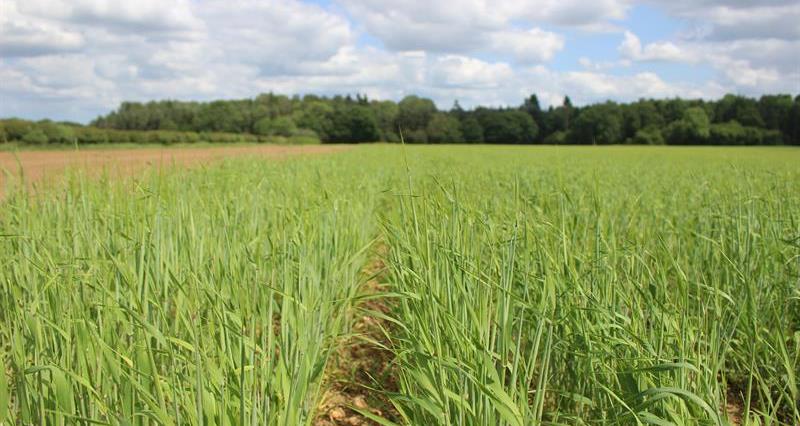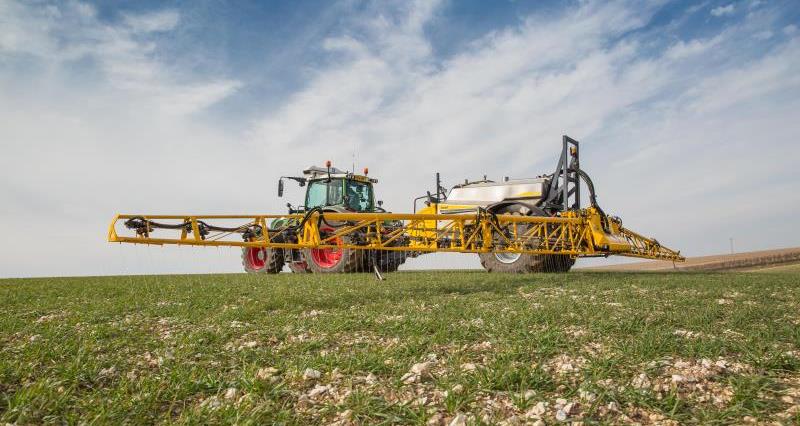Drift is a risk for all spray application, however the nature of pre-emergence herbicides is that they are used in situations where the bare soil can be releasing accumulated heat. This causes rising air that, without any crop to intercept it, can carry spray droplets up with it and cause drift.
Drift reduces the effectiveness of the spray application and can reduce the effect of a pre-emergence herbicides on weed control. It also creates a risk of contaminating non-target areas, which for reasons of good environmental stewardship needs to be avoided.
These non-target areas can on occasion also include other crops, for which there aren’t authorised uses of the active substance. While such contamination doesn’t create food safety issues, because these active substances are allowed for use on other food crops, it can cause significant residue problems.
Drift onto horticultural crops
There have been occasional issues in recent years where horticultural crops have been affected by pre-emergence herbicide active substances that are not registered in that crop, in particular prosulfocarb.
Herbicide products like Clayton Comply, Defy, Quidam Spinnaker and others that are routinely used on cereal crops all contain prosulfocarb. Issues arise when drift occurs from cereals onto fruit and vegetable crops.
If fruit or vegetable crops get affected by drift of a pre-emergence herbicide such as prosulfocarb, it can result in a residue greater than the default MRL (maximum residue level). This is because it is likely that the MRL for prosulfocarb on that crop will be set at the default lowest level, if no prosulfocarb-containing herbicides are available for that crop.
Crops with MRL exceedances cannot be marketed, resulting in significant losses for the grower. MRLs are a trading standard, despite the fact that there is no consumer health risk.
The MRL is always set at a level that is significantly more stringent than any safety level. There are horticultural crops where the permitted MRL for prosulfocarb is many times higher than those which have been affected by drift issues, which highlights that this is purely a trading standard issue.
If you are using pre-emergence herbicides this autumn ensure you follow best practice measures to eliminate the risk of drift to any nearby horticultural crops.
Top tips for getting the most out of your pre-emergence herbicides:
- Apply promptly after drilling – weeds can start to germinate immediately after drilling, so a prompt pre-em will prevent the weed growing past the layer of control from the herbicide.
- Go slow – keep the sprayer speed below 12 km per hour – higher speeds create turbulence behind the boom, reduce the stability of the boom, and results in drift and poorer coverage.
- Use nozzles that ensure good coverage and minimal drift - the chances of drift happening are greater with smaller spray droplets, so select nozzles to deliver a coarser spray. Consider using 90% drift reduction nozzles.
- Use higher water volumes - water volumes of 200 l/ha usually result in better surface coverage than lower water volumes.
- Keep the sprayer boom height low – a maximum height of 50cm above the target will help reduce drift and ensure optimum surface coverage.
- Ensure soil is moist – this moisture stimulates germination of weed seed and it is needed for the herbicide to move through the soil into the weed germination zone, ensuring better protection.
Farmers and growers should consider what best practice measures they can take to reduce drift in order to maximise product efficacy, encourage environmental stewardship, and protect non-target crops.



